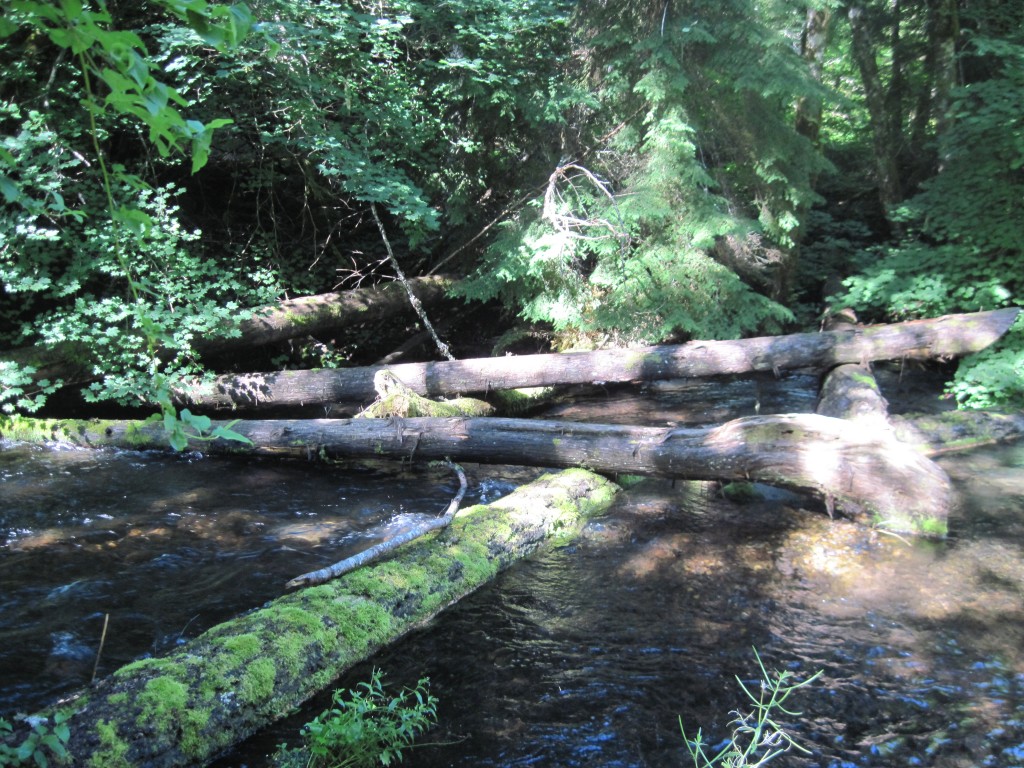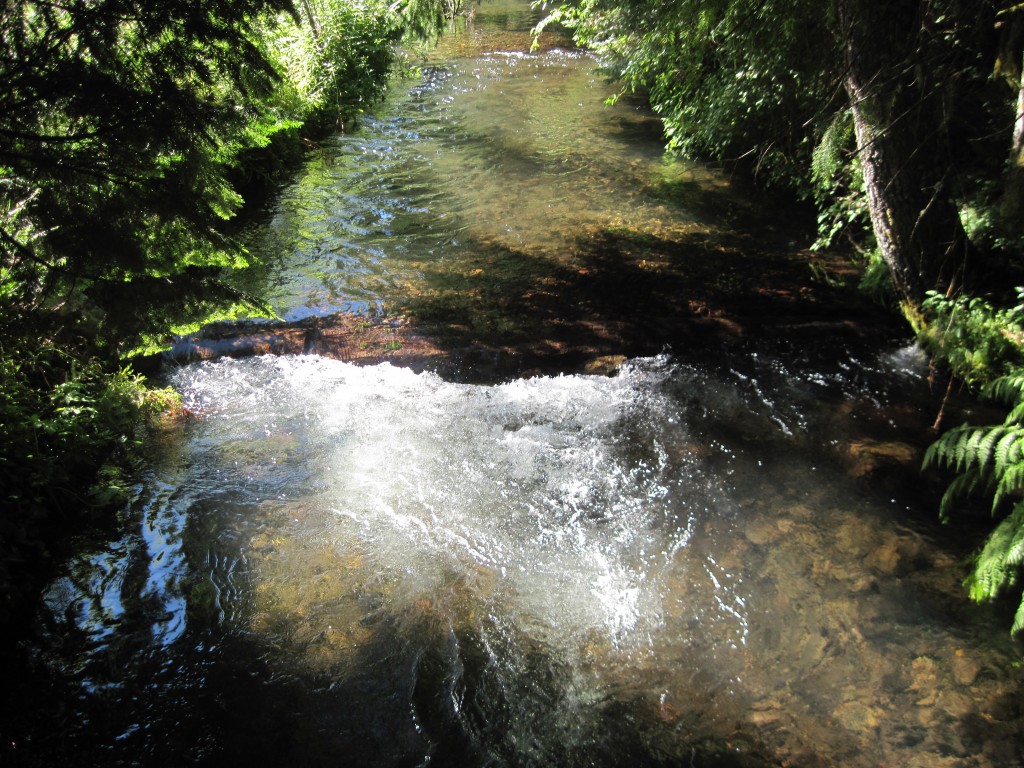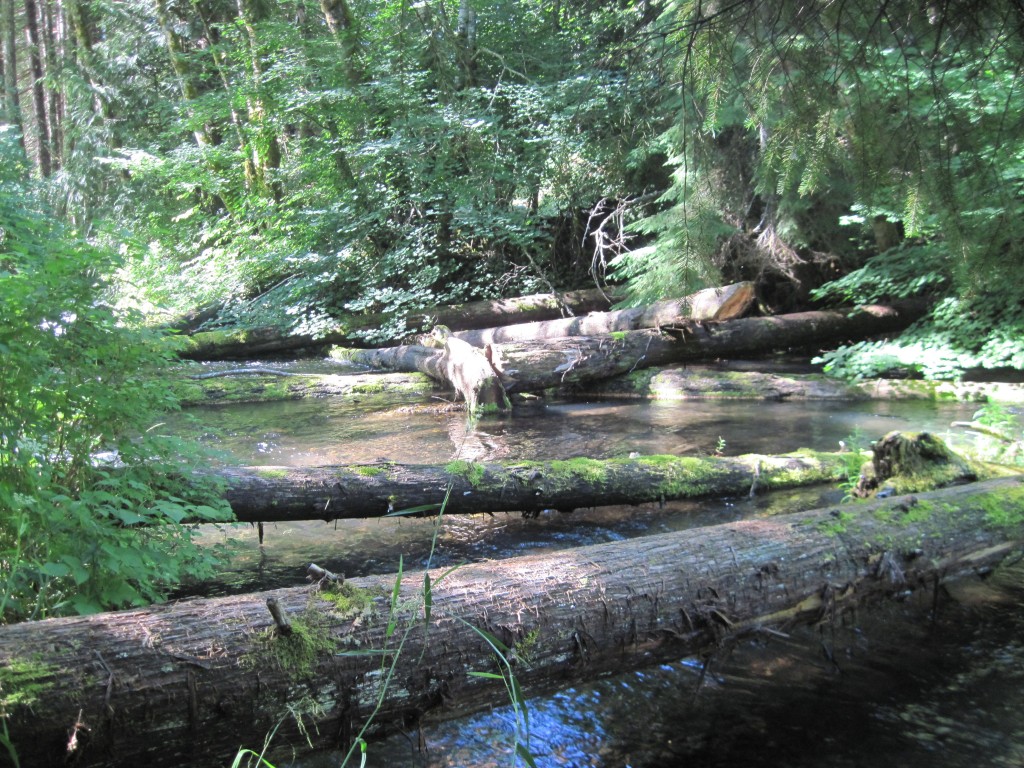The NSWC received funding from OWEB in 2011 to assist with restoring spawning habitat, channel complexity and off-channel habitat for Upper Willamette River spring Chinook salmon both above and below Big Cliff and Detroit Dam in the North Santiam Watershed.
As part of the Hazards to Habitat Program the Oregon Department of Transportation and the US Forest Service removed approximately 85 hazard trees located along Highway 22. An additional 35 large trees were tipped and along with the highway trees placed in the main river channel, in side-channels and in the rivers floodplain. A total of 6 stream reaches were improved with multiple large wood structures: 3 reaches along the Upper North Santiam, 2 reaches on Horn Creek and 1 reach on Marion Creek.
In addition to the large wood approximately 100 cubic yards of spawning gravel was added to 0.25 miles of Horn Creek. Six log sills were also strategically placed in Horn Creek to help hold the gravel in place.
To improve fish habitat conditions below the dams the US Forest Service donated large wood swept from Detroit Lake to the watershed council. The large wood was incorporated into 4 council restoration projects on Snake Creek, Stout Creek, Cold Creek and Dieckman Creek.
Reports & Project Photos:
USFS Hazards to Habitat Report: 2011 NSantiamHdwtrs Haz-to-Hab
USFS Horn Creek Acoplishments Report: Horn Creek 2011 accomplishment
North Santiam near Horn Creek Project Photos: HORN CREEK HH PROJECT 2011 GRANT
North Santiam near Straight Creek Project Photos: STRAIGHT CREEK HH PROJECT 2011 GRANT
North Santiam near Lynx Creek Project Photos: LYNX HH PROJECT 2011 GRANT
North Santiam near Fisher Creek Project Photos: FISHER HH PROJECT 2011 GRANT



